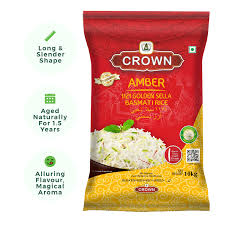When it comes to selecting the perfect rice for biryani, pulao, or other aromatic dishes, many chefs and home cooks turn to sella basmati rice for its unmatched quality and exceptional taste. Known for its long grains, fluffy texture, and rich aroma, this variety has gained immense popularity across both domestic and international markets. But what exactly makes sella basmati rice a preferred choice for so many? In this article, we explore the unique characteristics, processing methods, and culinary benefits that set this rice apart.
What Is Sella Basmati Rice?
Sella basmati rice is a form of basmati rice that has undergone a special parboiling process while still in the husk. The term “sella” refers to this process, which involves soaking, steaming, and drying the rice before milling. This unique method not only enhances the nutritional profile of the rice but also improves its cooking characteristics.
Unlike traditional basmati rice, sella basmati rice remains firmer and non-sticky after cooking. Its grains elongate even more than regular basmati, making it a favorite for dishes that require well-separated, long grains. The golden-yellow hue it acquires from the parboiling process also adds to its visual appeal.
Why Choose Sella Basmati Rice?
There are several compelling reasons why sella basmati rice is considered one of the best options for both commercial kitchens and household cooking.
1. Superior Grain Length and Texture
One of the most notable features of sella basmati rice is its extraordinary grain length. Upon cooking, the grains can expand up to three times their original size, resulting in a fluffy and elegant presentation. This makes it especially ideal for dishes like biryani and fried rice, where appearance and texture matter just as much as flavor.
2. Non-Sticky and Separate Grains
Thanks to the parboiling process, sella basmati rice is less sticky compared to other rice varieties. The grains remain separate and firm after cooking, allowing for better presentation and mouthfeel. This quality is especially appreciated in commercial food preparation where consistency is key.
3. Enhanced Nutritional Value
The parboiling process used in making sella basmati rice helps retain many of the rice’s natural nutrients. The steaming process pushes the nutrients from the husk into the grain, preserving vitamins and minerals that are often lost in conventional milling. As a result, it offers a more balanced nutritional profile compared to white rice.
4. Longer Shelf Life
Due to its unique processing, sella basmati rice has a longer shelf life than traditional basmati. It is less prone to infestation and spoilage, making it an excellent choice for bulk storage and distribution. For wholesalers and retailers, this means less waste and more consistent product availability.
5. Versatility in Culinary Use
Sella basmati rice is not limited to one type of dish. It works well in a variety of cuisines, from Middle Eastern pilafs and Indian biryanis to Mediterranean rice salads. Its ability to absorb flavors without losing its structure makes it a versatile staple in kitchens worldwide.
Growing Popularity Across the Globe
The demand for sella basmati rice has grown significantly over the years, particularly in export markets such as the Middle East, Europe, and North America. Its consistent quality and appealing characteristics have made it a favorite among professional chefs and culinary institutions.
India, being the largest producer and exporter of basmati rice, plays a key role in meeting global demand. Leading exporters have capitalized on the rising popularity of sella basmati rice by investing in advanced milling facilities and stringent quality control measures. These efforts have further reinforced the rice’s reputation for quality and reliability.
Tips for Cooking Perfect Sella Basmati Rice
To get the best results when cooking sella basmati rice, it’s essential to follow a few basic tips:
- Rinse thoroughly: Wash the rice several times to remove excess starch and prevent clumping.
- Soak before cooking: Soaking for 30 minutes to an hour helps the grains cook evenly and elongate fully.
- Use the right ratio: A common rice-to-water ratio is 1:2, though this can vary slightly depending on the brand.
- Avoid overcooking: Monitor the rice carefully to avoid mushiness. Sella basmati tends to hold its shape well, but it still requires proper timing.
Conclusion
In the world of premium rice varieties, sella basmati rice stands out for its visual appeal, nutritional value, and consistent cooking results. Whether you’re a home cook preparing a festive meal or a chef managing a high-volume kitchen, this rice offers the reliability and flavor needed to elevate any dish. Its growing global demand is a testament to the superior quality it brings to the table.
As more people discover the benefits of this remarkable rice, sella basmati rice continues to build its reputation as a top choice for those who value both taste and quality.








